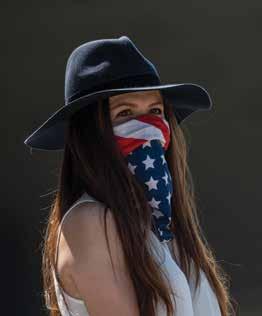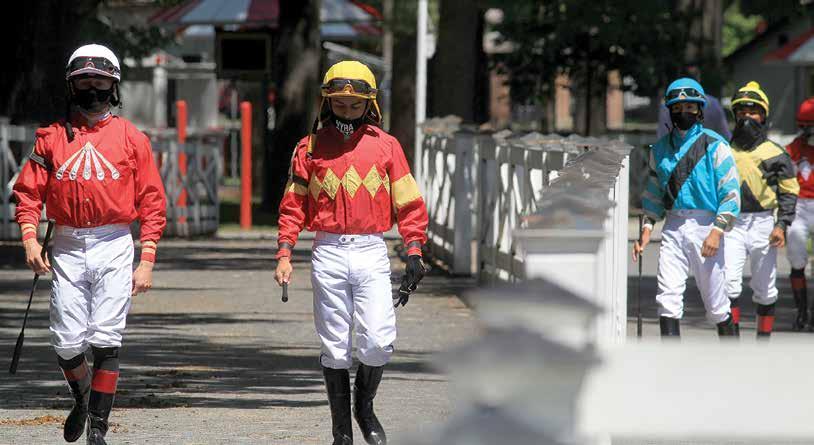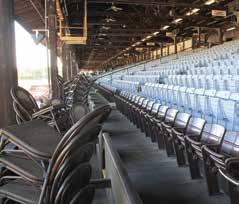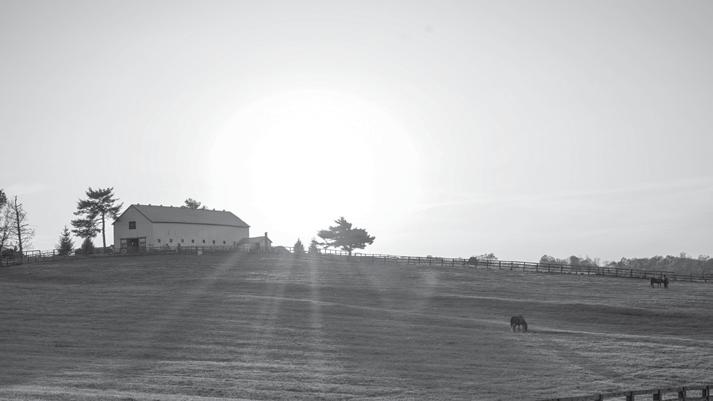
5 minute read
Racing Reality
Tiz the Law wins the Travers Stakes at Saratoga
PHOTOS BY HORSEPHOTOS.COM
RACING REALITY: THE NEW NORMAL IN THE SPORT OF KINGS
by HAROLD ROTH
2020 started out innocently enough. Foals were celebrating their universal birthdays as we ushered in another new year. The racing season was getting ready to explode with action and excitement after a well-deserved winter respite. Three year-olds were being prepared and conditioned to flaunt their talents in the series of races scheduled to take place in Florida, California, Arkansas, New York and Kentucky leading up to the Kentucky Derby and the Triple Crown.
As the year unfolded, the series of events that were about to consume our every action and turn the sport of king’s upside down was just emerging in the distance. By mid-February, we started hearing rumors of some flu-like virus that had emanated from China and was working its way to Europe via Italy. Strange things were happening, but we just couldn’t identify what they were or how they might affect us. Yes, Italy was hit hard, but why would we think that the United States, a country with the greatest resources and most advanced technological and medical experts, would also become overwhelmed? What is more, there was no way this flu-like virus could have a direct impact on the racing industry. After all, racing
Fans are required to wear face coverings.

is primarily an outdoor sport, and horses probably would not be infected by the disease.
By mid-March this virus – now known to all as the Corona Virus or COVID-19 – had made its way to Washington State and was beginning to have a visible impact on the United States population. There was growing concern as more people tested positive, hospitals began to fill up, and the death toll rose swiftly. Changes were disrupting our lifestyle, like never before. We saw what was happening in Europe and we were becoming alarmed. Through a sense of precaution, spectator events that involved large gatherings of any kind, including major sports and concerts, were beginning to cancel their schedules. By the end of March, as the situation became even more precarious and uncertain, racing followed suit as New York and California tracks cancelled their programs altogether.
Our lives were being turned completely around by this viral pandemic. Stay-athome orders accompanied the closing of schools, restaurants, movie theaters, and many stores. Las Vegas casinos and hotels were shuttered. Any kind of group gathering of ten or more people was prohibited. We were being informed that this novel virus could be contracted and easily spread by any and all human contact, particularly by molecules emitted through the air. Face coverings were strongly advised, in addition to social distancing and constant hand washing and sanitizing. Even the most experienced infectious disease specialists were uncertain of the path the virus was taking, and there was no cure or medical remedy on the horizon.
It wasn’t long before Churchill Downs announced the rescheduling of the Kentucky Derby from its traditional first Saturday in May to the first Saturday in September. This was a sure sign that something serious was afoot.
The corona virus, which has infected our lives, is now influencing the racing industry with no clear end in sight. In addition to the cancellation of racing, it is also wreaking havoc on horse sales, as they require interaction with buyers at a close proximity. Buyers, many of whom come from Europe and Asia, would also have to risk the dangers of air travel. The results were that horses readied and positioned for sale may lose their opportunity.
Despite the concern about the virus, racing continued unabated at Gulfstream Park in Florida and Oaklawn Park in Arkansas, albeit without spectators. The virus had made its way to all fifty states but hit New York the hardest. By mid- to late-May, under strong leadership and definitive action by Governor Andrew Cuomo, plus the cooperation of New Yorkers, the transmission and infection rate of the virus had improved. The New York Racing Association announced that it would reopen Belmont Park and run the Belmont Stakes on the 20th of June -- not only without spectators, but also at a shortened distance of a mile and an eighth. The third leg of the Triple Crown, the test of champions, was now its first leg.
Tiz The Law, whose victories in the Holy Bull Stakes and Florida Derby made him the winter book favorite, was ready to take on all comers. The 3-year-old colt is trained by Barclay Tagg and owned

by Jack Knowlton of Sackatoga Stable, the same connections that brought us popular Funny Cide, who won the 2003 Kentucky Derby and Preakness Stakes, only to fall short in the Belmont Stakes. This time around they had a resounding victory in the Belmont and will have another shot at the Triple Crown. This year, the Derby will be run September 5, followed by the Preakness, regularly the second leg, which will now be held October 3. The 2020 Triple Crown -- run out of order and over a period of months, not weeks -- will undoubtedly have an asterisk alongside it.
Changes have occurred and are continuing to impact the scheduling to events in the racing industry. The midsummer races, which traditionally take place at Saratoga Race Course in New York highlighted by the Travers Stakes, and at Del Mar Race Track in California featuring the Pacific Classic, are being run spectator-free with revised schedules under tight restrictions. Next up are the Kentucky Derby and Preakness Stakes taking place in the fall followed by the Breeders’ Cup, which is scheduled to be run in November at Keeneland Race Course in Kentucky.


No one can predict what the future will bring, or when this stage of the pandemic will let up. In the meantime there are things we can do. We can protect ourselves from the elements by following the guidelines outlined by medical experts as mandated by all the participating racetracks. Jockeys, trainers, owners and all workers involved in making these events happen are tested regularly, keeping social distance where possible, and wearing masks. Let’s keep cheering on our favorites and hoping everyone in the industry stays safe and well. This has become the new normal. At least for now.









